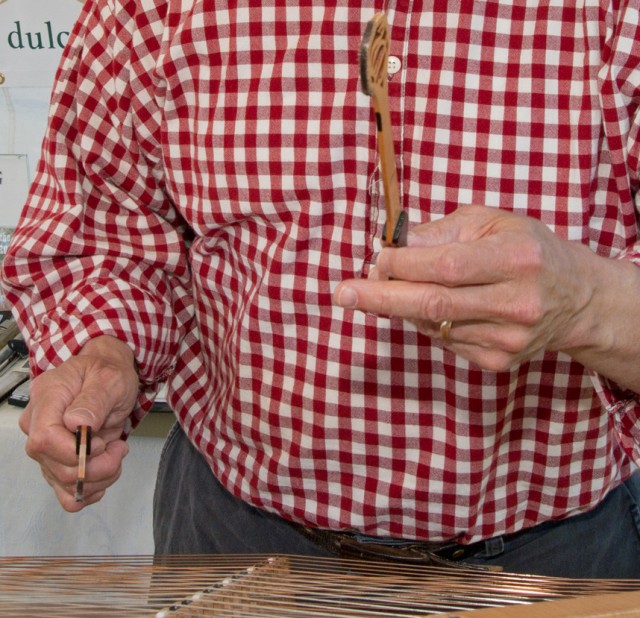Musical phrasing and interpretation are affected by the way the instrumentalist moves. It often marks the difference between cold, dead music-making and compelling, electrifying results.
A lot of dynamic effect can be achieved with a very efficient and slight movement, as when a hammered dulcimer player uses mostly his fingers to flip the hammers in just the right way, with shoulders and elbows moving the hammers to the note locations.
I’ve picked up a lot of expression ideas from listening to pianists. This ultimate instrument, whose concept was inspired by the hammered dulcimer, has a range of tonal character that I desire to transfer in some form to my own dulcimer playing; and I wonder how body language is involved in that. Enter Youtube!
One of my four favorite Classical pianists --- the ones who seem to move me the most profoundly with their expression --- is Martha Argerich, who can be seen here in an early video achieving what I consider to be absolutely thrilling Chopin, with a very efficient minimum of movement. Sometimes it almost looks like she’s doing a student recital and trying to get ‘Fur Elise’ right or something --- but… wow!
Then there are more specialized motions that can produce lots of meaningful tone, often learned from a beloved teacher who prefers a particular style or who just finds himself moving that way. Another of my favorite pianists is Arthur Rubinstein, who learned from Ignace Paderewski and others in the 19th Century’s Polish tradition of elegance and formality --- yet what warm emotional colorings he achieves within that stricture!
Glenn Gould grew up sitting in his mother’s lap close to the keys, and his teacher liked that position as well, so he sat on a 14-inch-high chair all his life; and Gould had a relatively flattened finger position --- and most would agree that all of this was bad form that would lead to poor musical velocity and tone. Wrong! He was among the most virtuosic, and he had a transcendently beautiful tone, as well as astonishing power of phrasing:
The fourth of my beloved pianists is Rudolf Serkin, who carried out his philosophy of music through his body’s actions: He didn’t consider himself a pianist but rather someone who respected the great music itself to the point that he would practically wrestle the piano into bringing the music out into the air. He’s not as efficient as Argerich; he doesn’t seem to have a particular style of moving or a tradition; yet the piano sings under his wrestling as it does nowhere else!
When I play hammered dulcimer, I find myself moving in ways that respond to the best of the sounds and rhythms that are coming to my ears, and trying to replicate those by behaving in like manner, and as I live in that moment, I must look a bit more like Gould and Serkin, moving less efficiently if that’s what it seems to take to draw the music out into the air, and hovering over the instrument if that seems to help lift the fullness of the tone off the strings and wood.
At times I’ll find myself stomping the floor as part of the motion --- sort of like Serkin --- or standing on tiptoe, or exaggerating the follow-through of a hammer strike so my hand flings high into the air; or --- as in Gould’s manner --- using my shoulder to bring the hammer down to the string in a position parallel to the soundboard, then instantly releasing it to elicit a remarkably different tone than if I’d swung with my fingers.
All this tends to be a moment-by-moment mixing and matching of motions that create dancing phrasings of coloration that, at least in my own body language’s case, makes the music speak in a special voice. Again, this is an approach that works best as you bodily and emotionally ‘live in the moment’: playing music becomes a special personal experience.
This may fly in the face of techniques and exercises that you’ve learned for precision’s sake. Those techniques are great, and I confess that I ought to pay more attention to them myself. But a compromise in body language, with its heightened risk of sloppiness or mistakes, may be worth experimenting with --- at least if you’re a Romantic like I am!





Comments